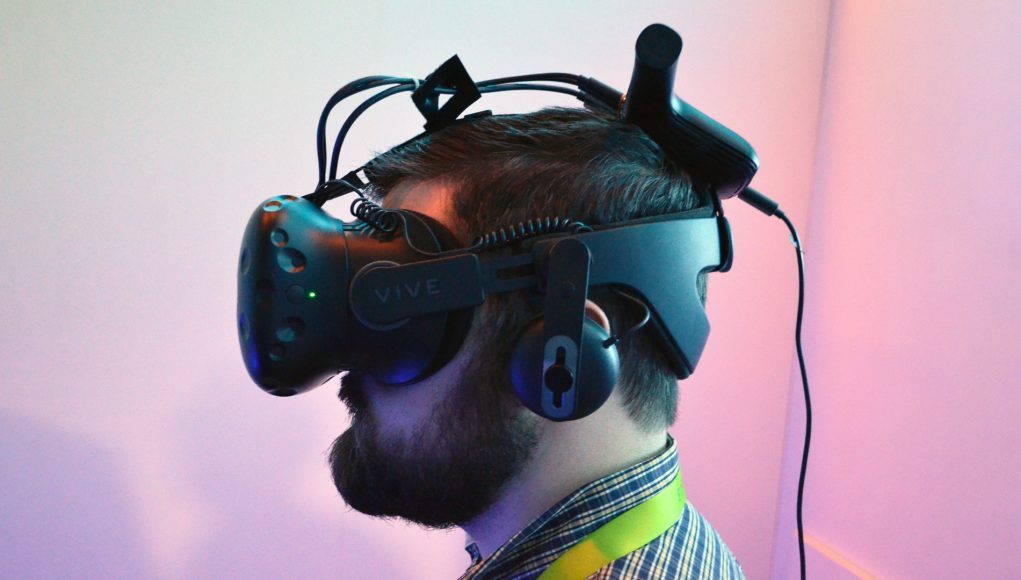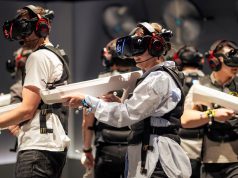Revealed this week at CES 2018, HTC has announced their own Vive Wireless Adapter which promises to break the tether on the Vive and Vive Pro. We went hands-on to see how it handles.
One year after announcing their intent to create a wireless adapter in collaboration with Intel at CES 2017, HTC revealed the Vive Wireless Adapter this week at CES 2018. The T-shaped device is based on Intel’s 802.11ad ‘WiGig’ 60GHz transmission technology and DisplayLink’s XR codec. It’s a later cousin of the various prototypes from Intel and DisplayLink that we saw earlier in 2017, but now with a new antenna design and soon to be packaged up for retail.
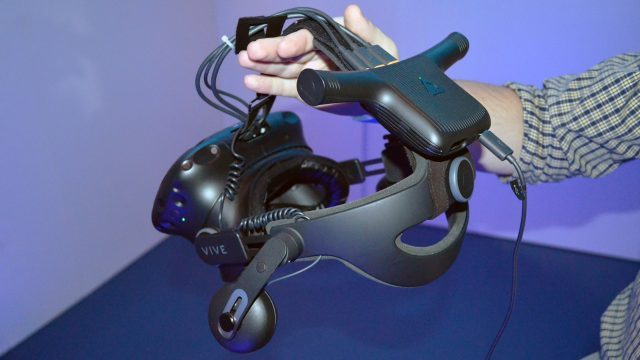
HTC says the Vive Wireless Adapter will support both the original Vive and the Vive Pro. The unit is planned to ship worldwide in Q3, though a price has yet to be announced.
I got a chance to test a pre-release version of the adapter at CES 2018, where HTC was showing it off attached to the original Vive running Doom VFR (2017). The Vive Wireless Adapter hasn’t yet been shown running with the Vive Pro.
Cables, Battery, and Transmitter
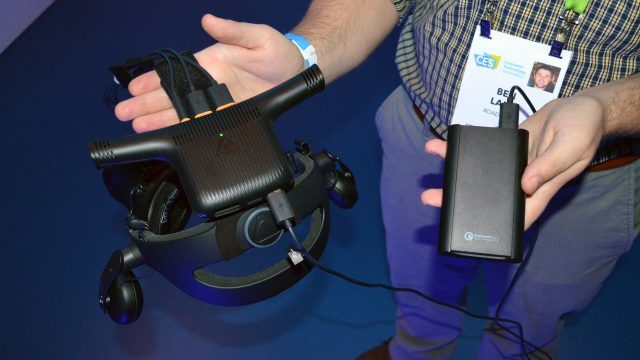
It appears that a set of short cables—that run from the headset’s ports right into the adapter—replace the existing lengthy tether. A single cable dangles from the back of the adapter which connects to a battery pack that you can tuck into your pocket. The battery pack appeared to be generic, and HTC said it wasn’t indicative of what would be included with the final Vive Wireless Adapter. Target battery life wasn’t mentioned, but this will surely depend on the battery capacity that they choose for the finished product.
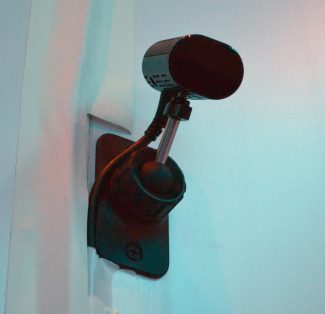
As I was putting on the headset I could feel that the unit was warm, but not hot to the touch. The Vive Wireless Adapter sits just behind the top of the head. Since it’s attached to the Deluxe Audio Strap, it’s mostly isolated from touching your head; I couldn’t feel the heat from the unit through my hair, but we’ll have to wait and see how it feels over longer play sessions (and for people with longer hair). So too will we need to wait to find out how comfortable it is when mounted on the default soft Vive headstrap.
In the demo booth, the transmitter, which looked like a little webcam, was mounted above head height on the wall, and aimed down into the center of the room-scale playspace. As this is 60GHz transmission, direct line of site is necessary for proper performance.
Image Quality
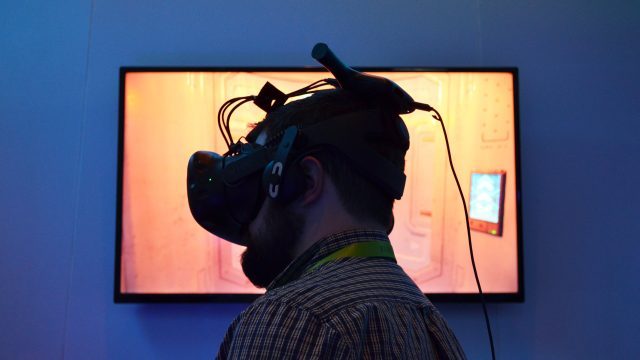
Looking through the headset, the image quality appeared very good when my head was moving slowly or was mostly static. Even things typically difficult to compress (like fog and particle swarms) appeared to be rendered very well. I would say, at least in the content that I was shown, the image quality looks indistinguishable from tethered when my head was static or moving relatively slowly. I did seem to notice that when I rotated my head very quickly, the image appeared to get a bit blockier, but it would very quickly snap back by the time my head slowed back down. It was subtle enough that I don’t think most VR users would notice it.
Of course, the content shown in the demo is likely picked as a best case scenario. I didn’t have a chance to pull up content that would offer a true stress test for the compression, so it remains to be seen how it will handle other potentially more challenging compression scenarios.
Latency
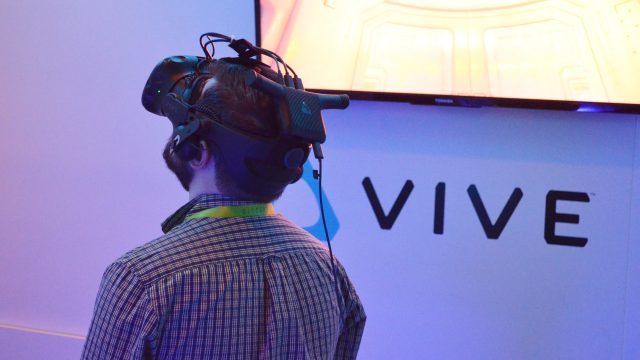
The flip side of the impressive image quality is noticeable latency. It wasn’t horrendous by any means, but I’m confident that in a blind test between a tethered Vive and one using the Vive Wireless Adapter, I’d be able to pick which is which with 100% accuracy. It may be subtle enough that some users wouldn’t notice it outright, but they may end up feeling it, since higher latency can cause accumulating discomfort.
The fact that there was noticeable latency actually surprised me. When I tested both the Intel WiGig VR and DisplayLink XR prototypes last year (precursors to the Vive Wireless Adapter), I was quite impressed with what I saw, including such minimal latency that I wouldn’t count on being able to pick between a wireless and wired Vive in a blind test.
We’ve reached out to HTC to ask why the latency was apparent when earlier tests with similar components and codecs seemed to have tighter performance. It remains to be seen how the increased resolution of the Vive Pro will impact the latency.
Robustness
One possible explanation for the latency is that the system might have been optimized for greater robustness of the connection. Indeed, the Vive Wireless Adapter didn’t appear to stutter once in my 20 minutes or so playing with it. Testing the limits of the system, it took me cupping my hands over both ends of the antennas and then my colleague covering the transmitter with his hand before the connection finally gave out. I also waved my hands wildly above and around the antenna and didn’t spot any obvious change in quality or latency.
This bodes well for the system’s performance in the less-than-ideal environments that will surely be encountered as the unit rolls out to homes and businesses.
Untethered
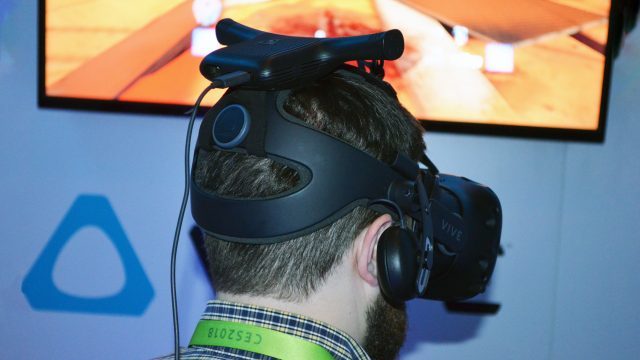
Latency aside, the freedom of room-scale tracking and no tether is wonderful. I’m so used to tethered VR headsets, and subconsciously managing the cable by pushing it out of the way with the back of my arms or stepping over it, that it took some time before I unlearned that behavior and really took advantage of the fact that I could move around easily in all directions unencumbered.
If a flawless wireless experience can indeed be delivered, it’s going to be especially useful for highly active content like cover shooters, boxing, and games where you take big swings, like when using virtual bats, swords, and golf clubs (or even real bats).
– – — – –
With two quarters to go before the planned launch of the Vive Wireless Adapter, I suspect there will be more tuning to come, which will hopefully bring about latency improvements. In the future we also expect to be able to test the Vive Wireless Adapter with the Vive Pro.

